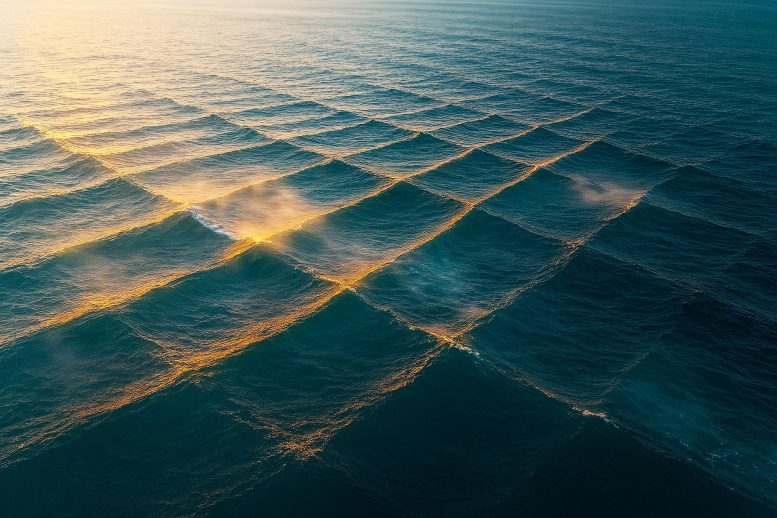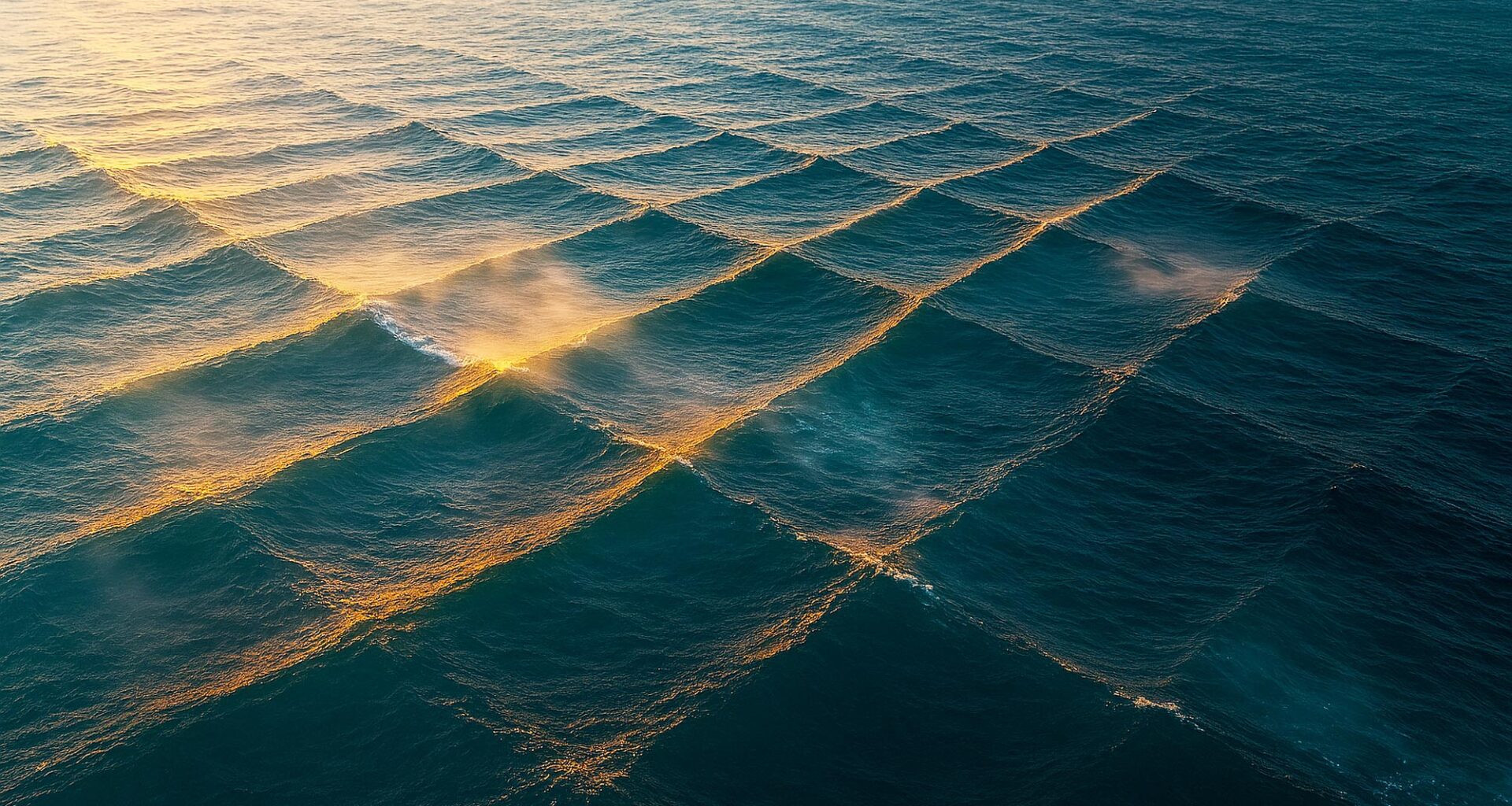 On China’s Qiantang River, witnesses recently observed an extraordinary “matrix tide,” where colliding tidal bores formed a grid of waves unlike anything previously explained. Now, researchers using advanced simulations have cracked the mathematics behind such two-dimensional wave patterns, opening the door to new understanding of how waves spread across fluids, plasmas, and other systems. (Artist’s concept). Credit: SciTechDaily.com
On China’s Qiantang River, witnesses recently observed an extraordinary “matrix tide,” where colliding tidal bores formed a grid of waves unlike anything previously explained. Now, researchers using advanced simulations have cracked the mathematics behind such two-dimensional wave patterns, opening the door to new understanding of how waves spread across fluids, plasmas, and other systems. (Artist’s concept). Credit: SciTechDaily.com
A University at Buffalo study describes two-dimensional wave patterns, including undular bores, that propagate in two directions.
Last year, spectators along China’s Qiantang River witnessed an unusual sight: waves arranging themselves into a grid-like formation.
This striking pattern, named the “matrix tide,” arose from the river’s famous tidal bores that rush upstream against the flow. In this case, two undular bores — shockwave-like surges that spread outward like ripples on water — traveled in different directions and collided, creating the effect.
The complexity of this interaction made it impossible for mathematicians to fully describe with quantitative solutions — at least until now.
A breakthrough in describing complex waves
Researchers from the University at Buffalo and the University of Colorado Boulder have identified and described new types of two-dimensional wave patterns — waves that move in two directions — occurring not only in water but also in systems such as plasmas and condensed matter.
Previously, the governing equations for these phenomena could only be solved in one dimension, where an undular bore travels in a single direction. The new study, published Aug. 5 in Physical Review Letters, employed numerical simulations to achieve solutions in two dimensions, providing insight into how patterns like the matrix tide emerge.
 The Qiantang River tidal bore in Yanguan on the Hangzhou Bay. Credit: 三猎 Creative Commons Attribution-Share Alike 4.0 International
The Qiantang River tidal bore in Yanguan on the Hangzhou Bay. Credit: 三猎 Creative Commons Attribution-Share Alike 4.0 International
“The equations become much more difficult to solve for two-dimensional waves and are very computationally intensive. That’s one of the reasons why this study hadn’t been done until now,” explained Gino Biondini, PhD, professor of mathematics in the UB College of Arts and Sciences.
Biondini conducted the research with Alexander Bivolcic, a former UB doctoral student now serving as an assistant professor at Embry-Riddle Aeronautical University, and Mark Hoefer, PhD, professor and chair of applied mathematics at the University of Colorado Boulder.
Supercomputers crack the code
Undular bores, also known as dispersive shock waves, are made up of oscillations that spread and move forward.
“The waves in an undular bore can be large and persist for a long time, making them a challenge to study mathematically,” Hoefer says. “But they don’t just attract mathematicians and physicists, surfers can ride a river bore for miles.”
In the 1960s, mathematician Gerald B. Whitham created a theoretical framework to describe these waves, but his equations were limited to one-dimensional cases where a bore traveled in only one direction, such as through a narrow channel.
The research team’s simulation of two-dimensional wave patterns colliding, which looked similar to the “matrix tide” effect seen last year on the Qiantang River. Credit: Gino Biondini/University at Buffalo
By the 1970s, Boris Kadomtsev and Vladamir Petviashvili introduced an equation that offered a foundation for describing weakly two-dimensional undular bores. However, this model remained constrained, as the mathematics was too difficult to solve in anything beyond simple scenarios.
High-performance computing makes it possible
Biondini and his collaborators have been working to leverage today’s high-performance computing to solve these equations in two dimensions and accurately model an undular bore propagating along two different directions.
“This is the same process, in principle, that meteorologists use for weather prediction,” Biondini says. “They have equations that govern the weather and input measurements like temperature and pressure, but computers are needed to evolve the state numerically and get an approximate solution.”
The team relied on the supercomputing power at UB’s Center for Computational Research (CCR).
“If you ran one simulation of a wave on a laptop, it would take 22 hours. Using graphical processing units, or GPUs, we were able to reduce it down to about an hour per simulation,” Biondini says.
Some of the outcomes of the resulting simulations looked very similar to the matrix tide pattern observed in the Qiantang River in September of last year. The next step will be recreating the phenomena, whether in a water tank or in different physical systems, in order to experimentally validate the team’s predictions.
“For me, being a physicist turned mathematician, one of the biggest satisfactions is to use mathematics to describe something that happens in the real world,” Biondini says.
Reference: “Mach Reflection and Expansion of Two-Dimensional Dispersive Shock Waves” by Gino Biondini, Alexander Bivolcic and Mark A. Hoefer, 5 August 2025, Physical Review Letters.
DOI: 10.1103/cdvf-xnfw
The work was supported by the National Science Foundation.
Never miss a breakthrough: Join the SciTechDaily newsletter.
